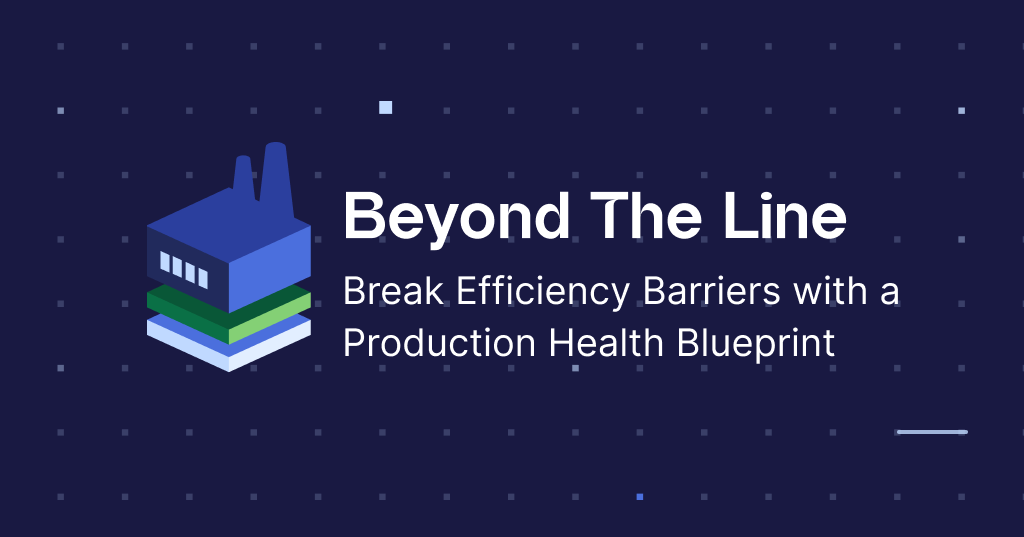
It’s not a dark secret. Everyone working with Internet of Things (IoT) technologies knows it’s tricky to get right. Too many things can still go wrong between reading the data and getting it to the cloud where the AI magic can happen. Luckily, according to Augury’s Senior Product Manager for Connectivity Naama Zarfati, we can now work to solve this connectivity problem – together.
I often say, “Let’s all work together following the same objectives.” (Sometimes, I even shout it – but then in a friendly and motivational way.)
Collaboration may sound straightforward, but it takes a lot of effort, communication, and focus to make it happen. And this need for teamwork is particularly true regarding making IoT technologies more seamless and reliable. We must deal with all the pain points together – with our teams, clients, and across the industry – while following a multipronged approach.
Why IoT Challenges Are Bad For Both Customers And Providers
To align our objectives, let’s look at the problem. It’s straightforward: customers are unsatisfied when they don’t get the service they pay for. And for them to get this service and be satisfied, the system has to work.
In the case of Augury, to make it flow for our architecture, the system has to:
1) Collect the data from each machine using sensors that need to be at the right place – and stay there. The sensor must handle all the environmental challenges, including extreme heat, extremely low temperatures, aggressive cleaning regimes, etcetera. Day-in-day-out.
2) Get the data from every machine to the cloud. First, the data must be transmitted internally from the sensors (via Bluetooth) to a gateway or node. This gateway knows how to talk to the cloud (via a Wi-Fi network, cellular, or LAN). And a lot can happen in terms of data hopping between devices and across protocols, which results in the customer getting no service.
However, once the data is in the cloud, it’s easy. Algorithms can start crunching numbers and human vibration analysts can check anything that gets flagged. Service is now possible and you are getting what you paid for.
Ready for the next era of efficiency?

Understanding The Flow Of Data: Low Service Versus No Service
The IoT problem is an umbrella of issues around what we call connectivity. And these issues can be broken down into three root causes:
· network issues
· hardware/device issues
· bad installation issues.
Now, if we understand the whole flow of data, we’ll understand where the challenges are and what customers need to face daily.
For instance, a fallen sensor might result in some data not making it to the cloud – it’s just not full service for that particular machine. One fallen sensor does not mean the machine is not being monitored, it’s just isn’t being monitored the way we all want it to be monitored.
But if a node or several nodes are not functioning, it affects more than that single machine. This can result in no service. And like a pyramid: the closer you get to the cloud via a node and router, the more machine data is involved and the more it impacts serviceability if you lose it.
To be clear, this is a problem for every IoT company that connects between different components.
Two Types Of Pain
Besides the ultimate pain of paying for low or no service, there’s another type of pain: high maintainability. In this case, maintenance workers have to deal with IoT issues daily – for instance, resetting nodes or reapplying sensors. Hence, they are forced to do something other than what they are getting paid for: maintaining the machines.
So obviously, there’s a strong need for a more robust and self-maintainable system.
Three-Pronged Approach
At Augury, we were quick to face this challenge. Yes, we can dispatch teams to fix issues as they arise, but this is prohibitively expensive in most cases since our clients are spread worldwide and often in out-of-the-way locations.
Instead, we divided the problem into different subproblems and assigned a cross-functional team to tackle each part.
1) Installation. The quality of installation needs to be on the road of constant improvement. The sensors need to stick to where they have been stuck, and be compliant to the environment where they have been installed. The customer’s network must be up to scratch and be able to adequately host our system and have the whole E2E system running smoothly. Happily, this involves easy-to-track KPIs.
2) Alerts. Often, clients don’t know if and why their network is not working correctly. We need to send more accurate and actionable alerts to our customer’s internal teams to deal with these issues.
3) Hardware IoT. This is another road of continual improvement: better and more robust hardware, improved connectivity infrastructure to provide data-driven clarity to clients, more self-healing, more auto-recovery, more durability when facing harsh conditions, more cost effectiveness, etcetera…
Onward to IoT 2.0
In many cases, these three problems can be solved by adapting what we already have. In other cases, it’s better to start from scratch and reinvent the wheel – or perhaps even look at off-the-shelf products that already have a proven track record.
So, by our teams not only aligning with each other but also embracing best practices and products from across the IoT industry, we can arrive at the next generation of IoT – with more stable service we are all proud of achieving.
We’ve already come a long way by releasing improvements and enhancements that are already paying dividends. It’s a journey, and one that’s not over yet. But already, we are beginning to bring it to life and it’s making a difference for our customers – and this gives us the confidence to move forward.
And I wish I could say there was a single challenge to overcome. The real challenge lies in the mixture. It’s about improving everything in tandem. And to finally get IoT right, we can only do it together. So let’s make 2.0 happen – now.
Ready for the next era of efficiency?







